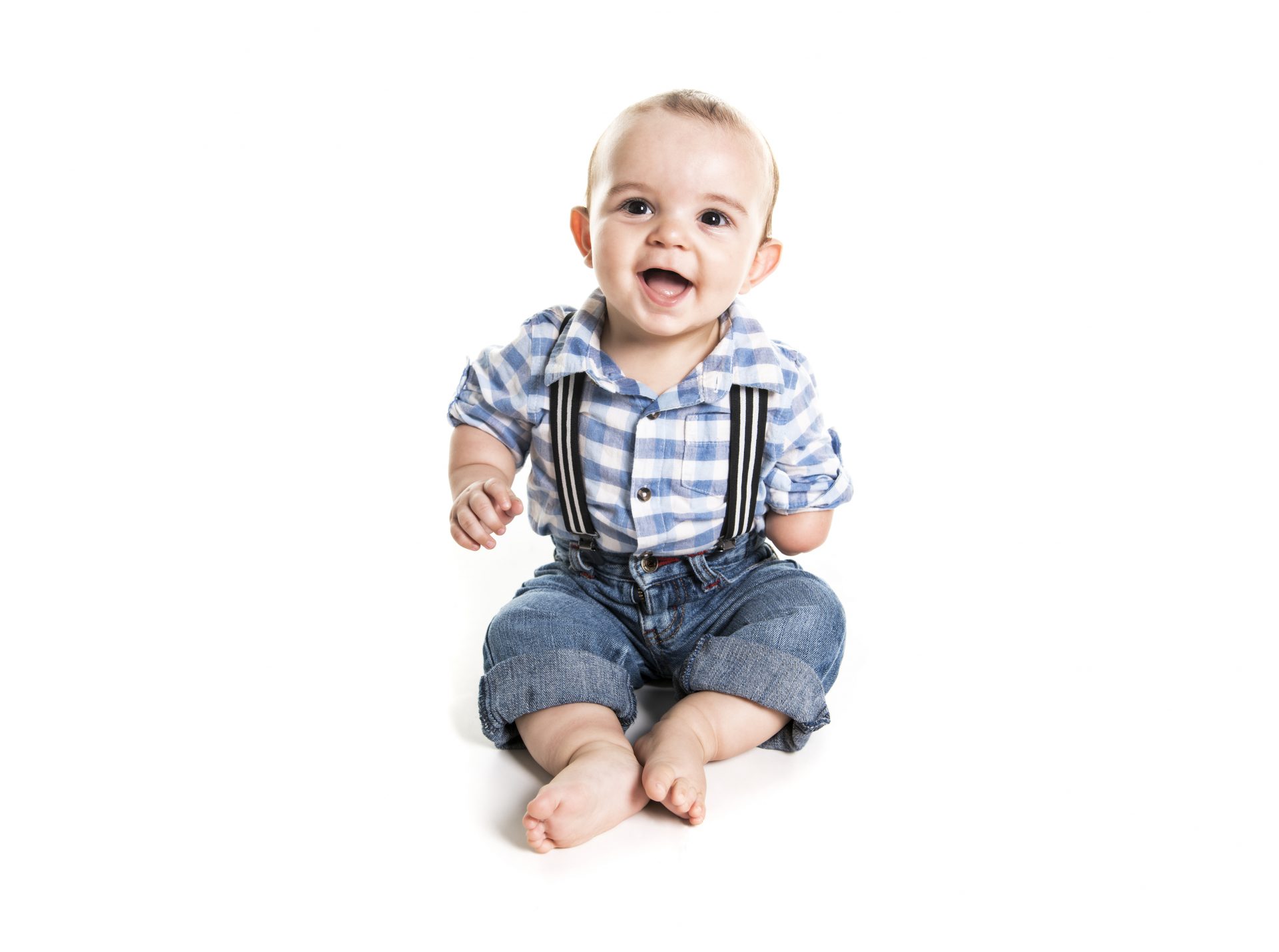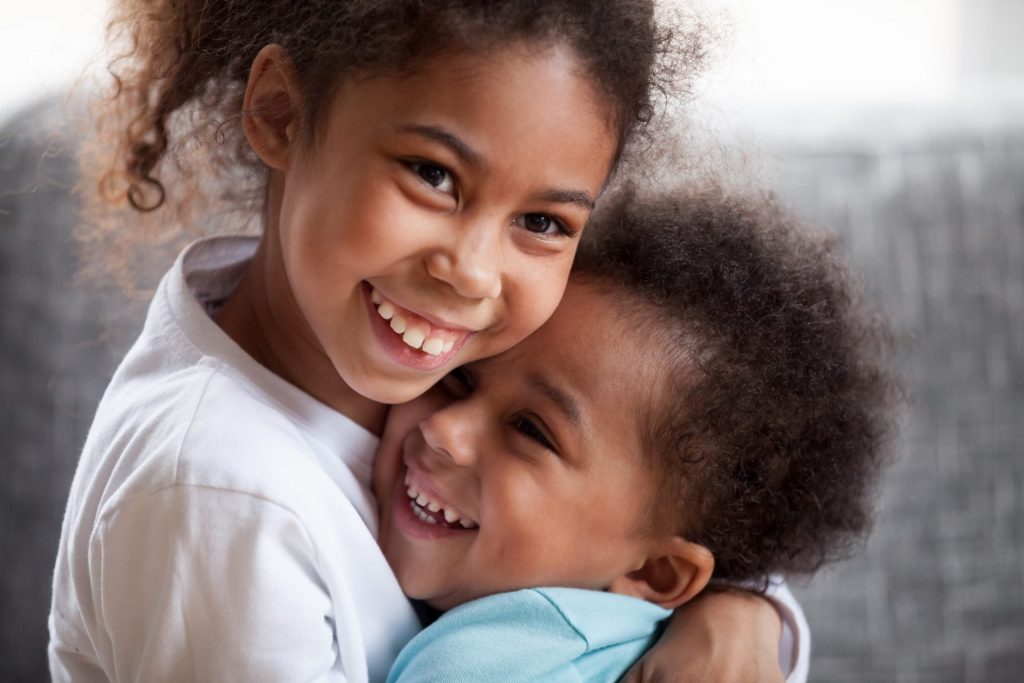
The birth of a child with a limb deficiency can be a traumatic and confusing experience.
It is normal to feel sadness and a sense of loss, particularly after the excitement and anticipation of a pregnancy in which everything seemed to go smoothly. It is reassuring to know that most children with a limb deficiency become very skilled at using their affected limb. They learn methods of completing tasks that would appear impossible and become adept at most activities they choose to attempt.
It is important to focus on their strengths and encourage their independence in daily life. Children whose amputation occurs after birth will also adapt to losing a limb although they may require support in relearning their independence.
Every parent wants their child to be accepted by friends, relatives and classmates. You need to learn how to respond to questions, concerns and curiosity about your child’s limb difference. Most people who ask questions mean well and brief answers are enough. Your child will learn from your example how to answer questions and react to new people and situations. Children with limb deficiencies are usually well accepted by their peers and can join in the usual activities.
All children develop at their own rate with their own strengths and weaknesses. The limb deficient child will also find their own way through the normal developmental milestones and play, and discovery should be encouraged.

Upper limb amputations
Children with a deficiency of their upper limb will become very adept at most tasks. Occasionally there will be an activity that is simply not possible without some form of assistance, for example cutting food. An occupational therapist can assist your child and determine which devices can assist with independence.
Most children with an upper limb deficiency are potential prosthetic limb users. In reality, children will find it easier to perform most tasks without a prosthetic limb. Despite having a shorter limb and an absent or imperfectly formed hand, the skin on the end of the stump is normal and has normal sensation.
Applying a prosthetic limb takes away the ability to touch and feel with the skin of the stump, and there is no way for the body to know where the prosthesis is in space. Despite this, there are times when two limbs are simply better than one, and the child and the family may wish to try a prosthesis. Children can be fitted with an upper prosthetic limb from the time they are learning to sit up, and therefore have their arms free to explore their environment. At this young age the child cannot make it open or close, but you may put a toy or colourful object into the prosthetic hand and encourage your child to use it as an extension of their own arm.
At about two years of age he or she will be able to learn to use a prosthetic limb that can open and close. It is important to remember that the prosthetic limb cannot replace the absent limb, but is merely an assistant to the “good” arm and should be treated as such. Activities for which children will find a prosthesis beneficial include cutting, cooking and twohanded activities.
Lower limb amputations
The infant with a congenital lower limb deficiency is usually ready to use a prosthetic limb when they can pull themselves up to a standing position. The child is then ready to walk around holding on to furniture or with hands held. A prosthetic limb is required at this age to encourage the development of balance and early independent walking.
Due to the great functional benefit achieved with a prosthetic leg, lower limb prostheses are generally well accepted by children. The child with a lower limb prosthesis is encouraged to participate in activities including school activities and sports.
Your child may try a prosthesis and choose not to use it. This is a very common occurrence and is in no way a reflection of the child’s ability or willingness to learn. They may wish to try again when they have a specific need, for example, to play a musical instrument or learn to drive.
Medical Considerations
Specific attention needs to be paid to the fit of the prosthetic limb on the limb and close observation of the skin and the shape of the stump. A child may develop bony overgrowth that works its way through the end of the stump. This will require medical intervention.
Your prosthetist will teach you how to check the stump regularly for redness or soreness and what to do if this occurs. They will also advise you how to check the fitting, general care of the prosthesis, skin care, and how to identify and manage problems at an early stage.
Schooling and Your Child
When you are selecting a school for your child tour the school and check it meets your child’s needs. If your child will need to use crutches or a wheelchair make sure the school has the proper facilities. If possible, meet the teacher/s in advance and talk with them about your child’s requirements. Your child will pick up on the attitude of the teacher, so it is important that the teacher understands your child and what their limb difference requires.
If your child will have regular absences for clinical and prosthetic appointments talk to the school. If you can provide the dates in advance teachers can plan class activities so that your child does not miss special events or assignment due dates and exams.
Teachers may act in a way that singles out your child; this type of behaviour is a reflection of their attitude towards children with physical differences. This singling out may be positive such as not giving a punishment if your child breaks a rule or offering excessive assistance. It may be negative behaviour such as not allowing full participation in activities or refusing to discipline bullies. If you are concerned that your child is being singled out discuss your concerns with the school principal.
Other children may tease your child or ask unwanted questions. Talk to your child about what they can do such as walking away or using humour. If you believe that there is persistent bullying happening see the school and plan together how to address the issue.
If your child does not like school or does not feel accepted make sure they have positive experiences at home and encourage supportive friendships with their peers outside school such as clubs and sports.
Children and Trauma
Children loose limbs to infection, traumatic accidents and cancer just as adults do.
Children also have to process and accept the limb loss and adapt to their new situation. A child may develop fears and anxiety not only regarding the loss of a limb, the circumstances in which the amputation occurred can create anxiety and fears.
Children react differently to trauma than adults do. If your child had an amputation due to an accident or other traumatic event it is important to looks for the signs of traumatic stress such as:
- Disturbed sleep. Your child may have nightmares, sleep restlessly, wet the bed or call out for you in the night.
- Guilt. Children can feel that they were bad and had to be punished hence the traumatic event. As a response to this guilt they may become naughty as they feel they should be punished. On the other hand some children become extra good as a way to make amends for what they think they did wrong.
- Reverting Behaviour. Some children may act like a younger child. They will become clingy, be afraid of being left alone or act in a babyish manner.
- Fear. Your child may develop fears they did not have before the amputation. They may fear things associated with the event such as cars. They may also develop phobias.
If anxiety and fears persist your child may need assistance from a professional. Talk to your doctor about a referral to a child psychologist or counsellor.
When their child has had an amputation due to a traumatic event parents will naturally have feelings of guilt and anxiety. It is important to maintain the child’s routine and not become over protective or overindulge your child as children need the security of consistency.
Your child needs to be able to talk about the event and work through their concerns and fears. They need to be reassured that they are not ‘bad’ and they did not deserve their amputation.
Teenagers with Amputation
When your child becomes a teenager they may not be as comfortable with their limb as before. Many teenagers with amputations or limb differences go through phases of trying to hide their prosthesis under lots of clothing. They may withdraw from activities that make their difference obvious such as sports. This is distressing for parents but it is a normal process of a teenager discovering their identity and a fear of being ‘singled out’ for being different to their peers. Encourage and support your teen during this phase, most return to normal prosthetic use in their late teens or young adulthood when they feel more comfortable with their individuality.
Teenagers need reassurance that they will be loved and accepted. Many worry that they will never meet a romantic partner and assume they will live a life of rejection.
Teenagers are bombarded with media imagery about perfect bodies and how to attract a partner. Teenagers with limb differences may need support to build their self esteem so that they feel accepted as a unique person. The following list has tips for helping your teenager develop positive self esteem:
- Encourage participation in the usual teenage rights of passage such as learning to drive a car.
- Focus on abilities, never make them feel inadequate about what they cannot do.
- Have your family and friends demonstrate acceptance of their own bodies including parts they dislike.
- Recognise and celebrate the positives in their lives.
- Avoid those who are a negative towards your teen such as those who tell them they will never succeed.
- Allow them to express their feelings without judgement or blame.
- If they have a problem help them to reach a solution that they are comfortable with.
Peer support is beneficial for teenagers, the section on emotional recovery has advice on choosing a suitable group and how support groups can help.

